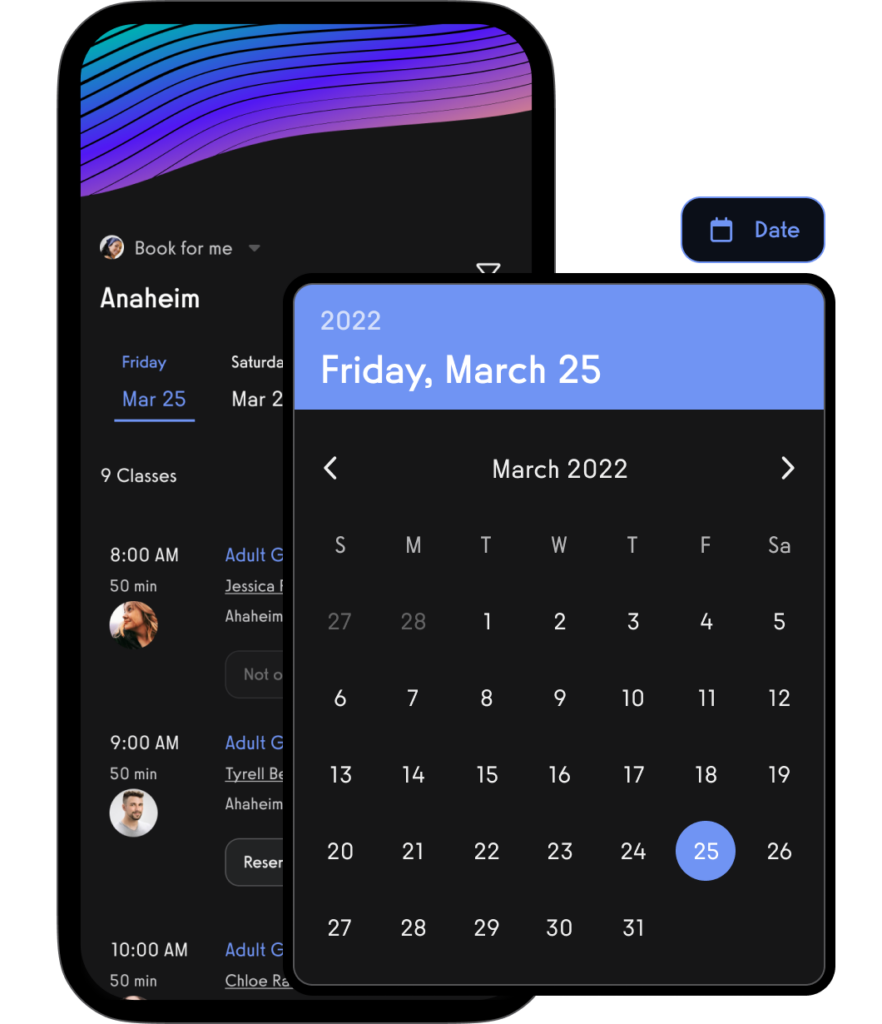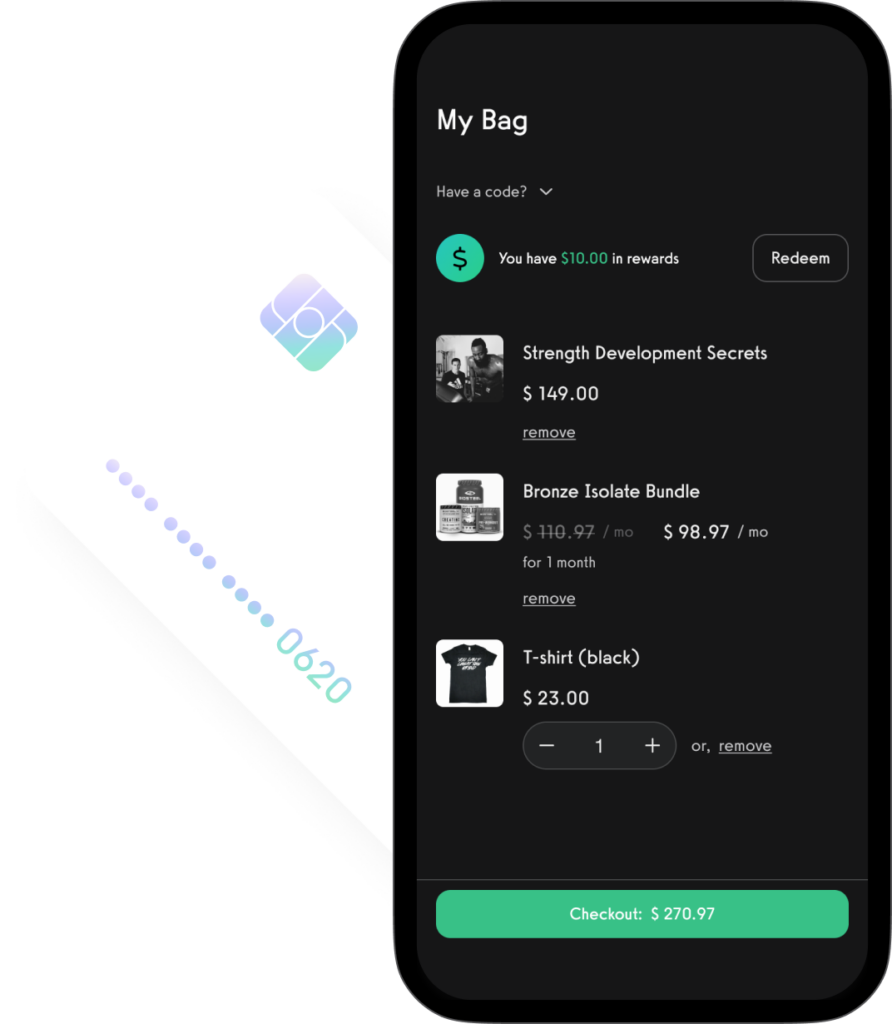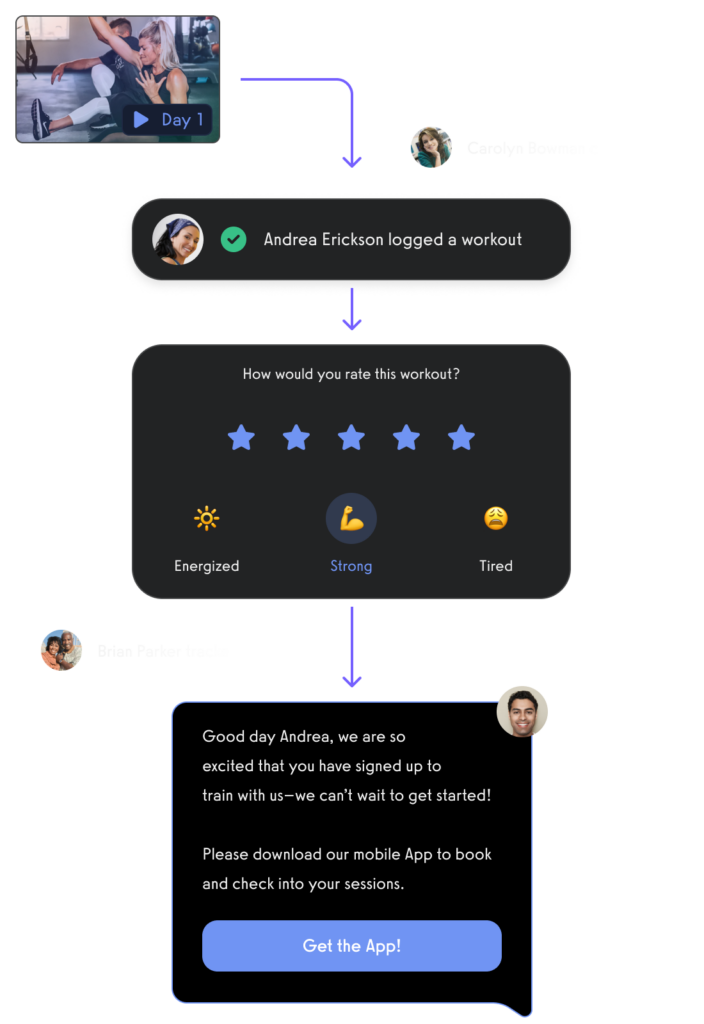Gym Pricing Strategy Guide (12 Tips + Average Gym Prices)
Use this gym pricing strategy guide to learn how to set gym prices effectively. Learn gym membership pricing strategy, compare average gym membership pricing, and more.

Developing an effective gym pricing strategy is crucial for having a successful gym business. An effective gym pricing strategy not only determines the revenue generated but also plays a key role in increasing gym profitability and attracting and retaining gym members.
In this comprehensive gym and health club pricing strategy guide, we will delve into the intricacies of gym pricing strategies and explore various factors to consider when designing the best gym membership pricing models. From market analysis and demographics to dynamic pricing and value proposition, we will cover all aspects to help you make informed decisions and achieve maximum profitability for your fitness business.

From gym membership pricing strategy to personal trainer pricing strategy, see how choosing the best pricing strategy for a gym can have profound implications on increasing your gym’s revenue and profit potential. Discover the ultimate guide to gym pricing strategies and learn how to optimize your gym’s pricing model to attract and retain more members. Be sure to also check out our guide on how to raise gym prices effectively.
In the fitness industry, various pricing models are utilized to cater to diverse client preferences and optimize gym revenue. These models range from the traditional monthly gym membership, offering steady revenue and simplicity, to the flexible pay-as-you-go model, ideal for occasional users. Bundling pricing combines several services at a discounted rate, while dynamic pricing adjusts costs based on demand or time.
The value-based gym pricing model sets prices according to perceived customer value, often employed by high-end gyms. Tiered memberships provide different levels of access and perks, and family or group models encourage communal sign-ups. Corporate memberships tap into the wellness market, and session-based models are perfect for specialty classes. Annual memberships offer a year-long commitment at a potentially lower rate, and hybrid models blend various strategies to broaden appeal. Each of these common health club pricing models can be effectively managed and implemented using Exercise.com, which offer versatile solutions for diverse gym pricing strategies.
Use the best gym management software and the best personal training software solutions to help you streamline your operations and supercharge your gym pricing and marketing efforts.
Offer advanced gym pricing functionality with booking and scheduling for your gym’s packages, sessions, memberships, and more.

Create and sell fitness memberships, products, and digital offers with the best gym payments software to maximize average order value (AOV), lifetime value (LTV), and revenue per member.

Manage, message, and market to your leads and gym members. Use upsells, down-sells, cross-sells, and more.

All from your very own custom branded fitness apps.


Different Gym Pricing Models
In the competitive fitness industry, gyms and fitness centers employ various fitness pricing models to attract and retain clients while maximizing revenue. The choice of a pricing model can significantly impact a gym’s profitability and appeal to different market segments. Understanding these models is crucial for gym owners to tailor their offerings to their target audience effectively. A platform like Exercise.com can support all these gym pricing models, offering flexible solutions for managing memberships, processing payments, and providing a seamless experience for both gym owners and members. Here, we explore some of the common and innovative pricing models used in the fitness industry:
Monthly Gym Membership Pricing Model
This traditional model involves members paying a fixed monthly fee for access to the gym facilities. The fee usually depends on the type of membership, with options ranging from basic access to all-inclusive packages that include classes, personal training sessions, and additional amenities. This model provides a steady revenue stream and is easy for members to understand.
Pay-as-You-Go Pricing Model
Ideal for those who prefer flexibility, the pay-as-you-go model allows members to pay for each visit or class. This model is attractive to occasional gym-goers who don’t want to commit to a monthly fee. It can also encourage trial usage, potentially converting occasional visitors into regular members.
Bundling Pricing Model
Bundling involves offering packages that combine various services, such as gym access, personal training, and classes, at a discounted rate compared to purchasing each service separately. This model can increase the perceived value and encourage members to try different services.
Dynamic Pricing Model
Dynamic pricing adjusts prices based on demand, time of day, or other factors. For example, off-peak hours might have lower rates to encourage gym usage during less busy times. This model can optimize revenue and manage gym capacity effectively.
Value-Based Pricing Model
This model sets prices based on the perceived value to the customer rather than solely on cost. High-end gyms with luxury amenities, specialized equipment, or celebrity trainers might use this model, charging a premium based on the unique experiences or results they offer.
Tiered Membership Pricing Model
Tiered pricing offers different membership levels, each with its own set of benefits and price points. Higher tiers might include additional services like advanced classes, spa access, or personal training. This model caters to a diverse clientele, allowing members to choose a level that fits their needs and budget.
Family or Group Pricing Model
Offering discounted rates for families or groups who sign up together can attract more members. This model promotes a sense of community and can lead to higher retention rates as groups motivate each other to regularly attend the gym.
Corporate Membership Model
Gyms offer special rates to businesses whose employees sign up as members. This model is a way to tap into the corporate wellness market, providing an avenue for steady membership growth through corporate partnerships.
Session-Based Pricing Model
Instead of unlimited access, this model offers a set number of sessions or classes for a fixed price. It’s ideal for specialty classes or training programs and can be an effective way to manage capacity for popular offerings.
Annual Membership Model
This model involves members paying for a year’s membership upfront, often at a discounted rate compared to monthly payments. It provides the gym with a lump sum and can enhance member commitment.
Hybrid Pricing Model
A combination of different pricing strategies, the hybrid model allows gyms to cater to various preferences and maximize revenue opportunities. For example, a gym might offer both monthly memberships and pay-as-you-go options.
Exercise.com’s versatile platform supports all these pricing models, providing gym owners with the tools to implement and manage various pricing strategies effectively. Its robust software enables easy adjustment and tracking of different pricing options, making it simpler for gyms to adapt their models to market needs and preferences.

Average Gym Prices – How to Price Gym Memberships, Packages, and Sessions
Use the gym pricing data below to help you determine how much to charge for gym memberships, personal training sessions, and more. Here’s an example of how you could outline average gym membership costs based on the type of gym, type of membership, and location. Please note that these figures are estimates and vary based on many factors.
| Type of Gym | Type of Membership | Location | Average Cost (Monthly) |
|---|---|---|---|
| Budget Gyms | Basic Membership | Midwest, USA | $10 – $20 |
| Budget Gyms | Premium Membership | Midwest, USA | $20 – $25 |
| Mid-range Gyms | Basic Membership | Midwest, USA | $30 – $40 |
| Mid-range Gyms | Premium Membership | Midwest, USA | $45 – $60 |
| Luxury Gyms | Basic Membership | Midwest, USA | $100 – $150 |
| Luxury Gyms | Premium Membership | Midwest, USA | $150 – $200 |
| Budget Gyms | Basic Membership | New York City, USA | $20 – $30 |
| Budget Gyms | Premium Membership | New York City, USA | $30 – $40 |
| Mid-range Gyms | Basic Membership | New York City, USA | $50 – $75 |
| Mid-range Gyms | Premium Membership | New York City, USA | $75 – $100 |
| Luxury Gyms | Basic Membership | New York City, USA | $200 – $300 |
| Luxury Gyms | Premium Membership | New York City, USA | $300 – $500 |
Budget Gyms: These are gyms that focus on providing a basic, no-frills workout experience. They typically offer a range of cardio and strength training equipment. Examples include Planet Fitness and Crunch Fitness.
Read More: Planet Fitness Business Model
Mid-range Gyms: These gyms offer a wider range of amenities and services, such as group fitness classes, personal training, and possibly a swimming pool or sauna. Examples include 24 Hour Fitness and LA Fitness.
Luxury Gyms: These are high-end gyms offering a premium fitness experience. They typically include a wide range of amenities, such as spa services, gourmet food options, top-of-the-line equipment, and high-end finishes. Examples include Equinox and David Barton Gym.
Read More: Best Boutique Fitness Studio Software
Please note, the membership cost can vary widely depending on the specific services included, the specific location of the gym, and other factors. The prices quoted are monthly fees and often gyms require an initiation fee to start.
Keep in mind that adding an online component to your gym is a high margin way to serve more customers without having to bear the costs of them entering your physical gym location. Running an online fitness challenge is a great way to dip your toe into the water of this type of hybrid gym offering. Be sure to chat with us about the best way to get started.

Actionable Gym Pricing Tips
Here are some tips for creating a successful pricing strategy for your gym:
- Understand Your Market: Do some research to understand what similar gyms in your area are charging. This will help you set competitive prices that are in line with what potential customers are willing to pay.
- Cost-Based Pricing: Consider the costs associated with running your gym, including rent, equipment, staff wages, maintenance, and marketing. Your prices need to cover these costs and provide a profit margin.
- Tiered Membership Plans: Offering different membership levels can cater to a broader range of customers. For example, a basic plan might include access to gym equipment, while premium plans might include personal training sessions, access to specialized classes, or other perks.
- Special Offers and Promotions: Introductory offers or discounts for long-term memberships can attract new customers. You can also offer promotional pricing for off-peak hours to attract more members and optimize gym usage throughout the day.
- Value-Based Pricing: Consider the value that your gym provides to members. If your gym offers unique amenities, cutting-edge equipment, or specialized classes, you may be able to charge more than your competitors.
- Bundle Services: Create package deals that bundle services together for a discounted price. This could include personal training sessions, nutrition consultations, or other services.
- Family or Group Discounts: Offering discounts for families or groups can attract new customers and encourage more usage.
- Corporate Packages: Partner with local businesses to offer corporate wellness packages. This can be an excellent source of steady revenue and bring in a significant number of new members.
- Student and Senior Discounts: Offering special pricing for students and seniors can attract these demographics and give you a competitive edge.
- Flexibility: Allow for some flexibility in your pricing. Some members might want a month-to-month membership, while others might be willing to pay for a year upfront for a discounted rate.
- Upsell Opportunities: Look for upsell opportunities, like personal training sessions, massage services, or selling products like gym gear or nutritional supplements.
- Transparent Pricing: Be clear and transparent about all your pricing and the terms of your contracts. Hidden fees can lead to customer dissatisfaction and damage your gym’s reputation.
Remember that the best pricing strategy for your gym will depend on many factors, including your location, the services you offer, your target audience, and more. Don’t be afraid to adjust your pricing over time as you learn more about what works for your gym.

Understanding the Importance of a Well-Designed Gym Pricing Strategy
A well-designed pricing strategy is the foundation of a successful gym. It goes beyond simply setting a price for memberships and services – it involves careful consideration of myriad factors that influence consumer behavior. A strategic approach to pricing can help businesses optimize revenue, attract new customers, retain existing members, and establish a competitive advantage in the market.
One important factor to consider when designing a pricing strategy is the target market. Different customer segments may have varying price sensitivities and preferences. For example, a gym targeting high-income professionals may be able to set higher prices compared to a gym targeting college students. Understanding the demographics and psychographics of the target market can help determine the optimal pricing structure.
In addition to the target market, competition also plays a crucial role in pricing decisions. Analyzing the pricing strategies of competitors can provide insights into market dynamics and help identify opportunities for differentiation. By offering unique pricing options or value-added services, a gym can position itself as a more attractive choice for potential customers.
Key Factors to Consider When Developing Gym Pricing Strategies
When developing a gym pricing strategy, there are several key factors to consider. First and foremost, it is important to understand the target market and their willingness to pay. Conducting market research and competitor analysis can provide valuable insights into pricing benchmarks and consumer preferences. Additionally, considering the operational costs, overhead expenses, and desired profit margins is crucial to ensure sustainability and viability.
Another vital factor to consider is the perceived value of the offerings. Customers must see the benefits and value in the gym’s services and facilities to justify the price. By creating an exceptional customer experience and emphasizing the unique aspects of your gym, you can establish a strong value proposition that justifies your pricing.
Furthermore, it is essential to take into account the pricing strategies of your competitors. Analyzing their pricing models and understanding how they position themselves in the market can help you determine the most effective pricing strategy for your gym. This includes considering factors such as introductory offers, membership tiers, and discounts for specific demographics or time periods.
Analyzing Market Trends and Competitive Pricing to Stay Ahead
Keeping a finger on the pulse of market trends and analyzing competitive pricing strategies is paramount to staying ahead in the fitness industry. Understanding how other gyms position themselves, what services they offer, and how they price them can provide insights into market gaps and opportunities. By staying aware of emerging trends, you can proactively adapt to changing customer preferences and price your memberships competitively, giving your gym a distinct advantage.
Furthermore, conducting regular market research and competitor analysis can help you identify potential threats and opportunities in the fitness industry. By monitoring the pricing strategies of your competitors, you can adjust your own pricing to remain competitive and attract new customers. Additionally, analyzing market trends allows you to anticipate shifts in consumer demand and adjust your offerings accordingly. This proactive approach ensures that your gym stays relevant and continues to meet the evolving needs of your target market.
The Role of Demographics in Determining Gym Pricing
Demographics play a significant role in determining gym pricing. Different customer segments have varying financial capabilities, preferences, and expectations. For example, pricing strategies for urban professionals may differ from those catering to students or retirees. By analyzing the demographic composition of your target market and understanding their specific needs, you can tailor pricing structures to maximize customer acquisition and retention.
One important demographic factor to consider when determining gym pricing is age. Younger individuals, such as college students or young professionals, may have limited financial resources and may be more price-sensitive. Offering discounted rates or flexible payment options can be an effective strategy to attract this demographic. On the other hand, older individuals, such as retirees, may have more disposable income and may be willing to pay higher prices for additional amenities or personalized services.
Another demographic factor to consider is location. Gym pricing can vary significantly depending on the geographical area. For example, gyms located in affluent neighborhoods may be able to charge higher prices due to the higher average income of the residents. Additionally, gyms located in urban areas may have higher operating costs, such as rent and utilities, which can impact pricing. Understanding the local market and competition is crucial in setting competitive and profitable pricing strategies.
Creating Different Membership Options to Cater to Various Customer Needs
One-size-fits-all pricing models often fall short when it comes to accommodating the diverse needs of gym-goers. To appeal to a wider customer base, it is essential to create different membership options that cater to various needs and budgets. This could include flexible contracts, discounted rates for off-peak hours, family plans, or customized packages for specific fitness goals. By offering choice and flexibility, you can attract a broader range of customers and increase your gym’s appeal.
Flexible contracts are a great way to cater to customers who may not want to commit to a long-term membership. By offering month-to-month or short-term contracts, individuals can have the freedom to try out the gym without feeling tied down. This option is particularly appealing to those who are unsure about their fitness goals or have unpredictable schedules.
Discounted rates for off-peak hours can also be a valuable membership option. Many people prefer to work out during non-peak times, such as early mornings or late evenings. By offering lower rates during these hours, you can incentivize customers to choose less crowded times, which can lead to a more enjoyable and efficient workout experience for everyone.
Implementing Dynamic Pricing Models for Optimal Revenue Generation
Dynamic pricing models have gained prominence in recent years as an effective revenue generation strategy. By accounting for factors such as demand, time of day, and seasonality, dynamic pricing allows gyms to adjust prices based on real-time market conditions. Offering lower rates during off-peak hours or incentivizing utilization during slower periods can help optimize revenue and ensure maximum utilization of gym resources.
One key advantage of implementing dynamic pricing models is the ability to capture additional revenue during peak demand periods. By increasing prices during high-demand times, gyms can capitalize on customers’ willingness to pay more for access to popular classes or equipment. This not only generates more revenue but also helps manage overcrowding and ensures a better experience for members.
Furthermore, dynamic pricing models can also be used to target specific customer segments. By analyzing data on customer preferences and behaviors, gyms can create personalized pricing strategies that cater to different groups. For example, offering discounted rates to students or seniors can attract these demographics and increase overall membership numbers.
The Power of Bundling: Offering Additional Services and Perks with Membership Plans
Bundling additional services or perks with membership plans can enhance the perceived value and customer experience. By offering access to personal training sessions, group fitness classes, spa facilities, or exclusive events, gyms can differentiate themselves from competitors and justify premium pricing. Bundling can also encourage upselling, drive customer loyalty, and boost overall revenue.
Furthermore, offering additional services and perks through membership plans can also help gyms attract and retain a wider range of customers. For example, by including childcare services or family-friendly activities, gyms can cater to the needs of busy parents who may otherwise struggle to find time for exercise. Additionally, by bundling nutritional counseling or meal planning services, gyms can appeal to individuals who are looking for a holistic approach to their health and fitness journey.
Leveraging Introductory Offers and Promotions to Attract New Customers
Introductory offers and promotions are powerful tools to attract new customers to your gym. By providing discounted rates, free trials, or value-added incentives, you can entice potential members to experience your gym’s offerings before committing to long-term contracts. These initial introductions can help create positive impressions, build trust, and inspire continued membership.
One effective introductory offer is a discounted rate for the first month of membership. This allows potential customers to try out your gym at a reduced cost, making it more appealing for them to take the leap and join. By offering a discounted rate, you are showing that you value their business and are willing to provide a special incentive to get them through the door.
In addition to discounted rates, offering free trials can also be a great way to attract new customers. By allowing potential members to experience your gym for a certain period of time without any financial commitment, you are giving them the opportunity to see if your gym is the right fit for them. This can help alleviate any concerns or doubts they may have and increase the likelihood of them becoming long-term members.
Utilizing Data Analytics to Fine-Tune Pricing Strategies for Maximum Profitability
Data analytics plays a significant role in fine-tuning gym pricing strategies. By leveraging data on member behavior, attendance patterns, and purchasing habits, gyms can gain valuable insights into how pricing changes impact customer decisions. This information can be used to optimize pricing structures, identify revenue opportunities, and personalize offerings to different customer segments for maximum profitability.
Balancing Value and Affordability: Finding the Sweet Spot for Gym Memberships
Finding the delicate balance between value and affordability is instrumental in pricing gym memberships. While it is essential to provide an exceptional customer experience and premium services, it is equally important to ensure that pricing remains accessible to the target market. By striking the right balance, gyms can attract and retain customers, build brand loyalty, and achieve sustainable growth.
Adapting Pricing Strategies During Seasonal Demand Fluctuations
Seasonal demand fluctuations can significantly impact gym membership sales and utilization rates. By adapting pricing strategies to accommodate these fluctuations, gyms can maximize revenue during peak seasons and incentivize membership during slower periods. This could involve offering seasonal promotions, flexible short-term contracts, or incorporating special events or programs that align with changing customer needs.
The Impact of Member Retention on Long-Term Revenue Growth
Member retention is a critical aspect of long-term revenue growth for gyms. Finding the right pricing strategy that aligns with members’ needs and offers a balance of affordability and value is key to ensuring customer loyalty. By continuously monitoring member satisfaction, adjusting pricing models if necessary, and offering personalized incentives, gyms can foster strong relationships with their members and build a solid foundation for sustained growth.
Exploring Price Discrimination Techniques for Different Customer Segments
Price discrimination techniques can be an effective way to maximize revenue by catering to different customer segments. This can involve tiered pricing based on age, income, or other qualifying factors. By tailoring pricing to specific customer groups, gyms can optimize revenue generation and create targeted marketing strategies that resonate with different segments.
Enhancing Customer Perception through Transparent and Fair Pricing Practices
The perception of fairness and transparency in pricing is paramount for customers. Clear communication, avoiding hidden fees, and providing a breakdown of what customers receive for their membership fees can foster trust and improve overall customer satisfaction. By building a reputation for fair and transparent pricing practices, gyms can attract and retain customers who value integrity and openness.
The Importance of Regularly Reviewing and Adjusting Gym Pricing Strategies
Gym pricing strategies should never be set in stone. It is crucial to regularly review and adjust pricing structures based on changing market dynamics, customer preferences, and overall business objectives. Constantly monitoring key performance indicators, soliciting customer feedback, and incorporating industry innovations can help gyms stay agile and responsive, ensuring their pricing strategies remain relevant and competitive.
Start Optimizing Your Gym Pricing Strategy Today!
By taking a comprehensive approach to developing pricing strategies, gyms can position themselves for success in an increasingly competitive market. By considering the key factors, analyzing market trends, personalizing offerings, and leveraging data analytics, gyms can fine-tune their pricing models to optimize revenue, attract new customers, and foster loyalty among existing members. Remember, a well-designed and continually evolving pricing strategy is the cornerstone of a thriving fitness business.
Exercise.com can support your gym pricing strategy by providing software that allows for flexible pricing options, membership management, and automated billing. The platform helps in creating and managing tiered pricing structures, promotional offers, and tracking the performance of different pricing strategies, thereby aiding in informed decision-making to maximize profitability and meet customer needs effectively.

How do gyms set their prices?
Gyms set their prices based on several factors including operational costs, target market demographics, competitor pricing, location, and the range of services and amenities offered. They often balance the need to cover costs and make a profit while remaining attractive to potential members.
What is the pricing strategy at Planet Fitness?
Planet Fitness employs a low-cost pricing strategy, offering affordable memberships with basic gym access and a no-frills approach. This strategy appeals to a broad demographic, particularly those new to gym environments or looking for a budget-friendly option.
What is the pricing strategy at Barry’s Bootcamp?
Barry’s Bootcamp uses a premium pricing strategy, reflecting its boutique nature. Prices are higher due to the specialized, high-intensity workout experience, upscale facilities, and additional amenities like protein bars and merchandise.
Which gym pricing strategy is best and why?
The best gym pricing strategy depends on the gym’s target market and business model. Value-based pricing, which aligns prices with the perceived value to the customer, is effective for ensuring customer satisfaction and loyalty while maintaining profitability.
How do cheap gyms make money?
Cheap gyms make money through volume; they attract a large number of members due to their low prices. They often have lower operational costs and may offer additional paid services like personal training, classes, or premium amenities to supplement their income.
How profitable is the average gym?
The profitability of the average gym varies widely. Factors like location, size, membership base, and operational efficiency play significant roles. Successful gyms can see healthy profit margins, but many gyms operate with more modest earnings.
How many memberships does a gym need to be profitable?
The number of memberships a gym needs to be profitable depends on its operating costs, pricing structure, and additional revenue streams. Generally, a few hundred active memberships can sustain a small to medium-sized gym.
What is the best pricing strategy for maximizing gym profit?
The best pricing strategy for maximizing gym profit is often a tiered pricing model. This allows gyms to cater to different customer segments, offering various membership levels with different amenities and services, thereby maximizing revenue opportunities.
What is decoy pricing?
Decoy pricing is a strategy where a business offers a product or service at a price point that’s not intended to sell but to make another option look more attractive. In gyms, this might be a high-priced membership tier that enhances the perceived value of a lower-priced option.
What is a pricing pyramid?
A pricing pyramid is a strategy where a range of pricing levels is offered, from low to high. Each level offers different benefits and services, appealing to different market segments and creating multiple revenue streams for the business.
Which gym and fitness pricing strategies are used mainly?
The main gym and fitness pricing strategies include:
- Tiered Memberships: Offering different membership levels with varying amenities.
- Flat-Rate Pricing: One price for access to all services.
- Per-Session or Class-Based Pricing: Members pay per visit or class.
- Premium Pricing: Higher prices for exclusive, boutique experiences.
What gyms use a premium pricing strategy?
Gyms that use a premium pricing strategy typically include boutique fitness studios like SoulCycle, Barry’s Bootcamp, and high-end health clubs. These gyms offer specialized services, top-notch facilities, and exclusive experiences.
What type of pricing strategy do gyms use?
Gyms often use a mix of pricing strategies, including tiered pricing, where different levels of membership offer varying access to services and amenities. They may also use promotional pricing, offering discounts to new members or during off-peak times. Another strategy is bundle pricing, where services are packaged together for a reduced overall cost. These strategies can be automated and optimized using Exercise.com’s platform, which helps manage membership tiers, promotional offers, and package deals.
What is value-based pricing for gyms?
Value-based pricing for gyms involves setting prices based on the perceived value of your services to your members, rather than simply basing it on cost. For example, if your gym offers high-end equipment, expert personal trainers, and a wide range of classes, you can charge more than a basic gym because of the additional value you provide. Exercise.com can support a value-based pricing strategy by enhancing the value you provide through features like workout plans, progress tracking, and online booking.
What are the four gym pricing strategies?
The four main gym pricing strategies are premium pricing, penetration pricing, economy pricing, and price skimming. Premium pricing is where high prices are set to reflect the high quality or exclusivity of a product. Penetration pricing involves setting a low initial price to attract customers, before gradually increasing it. Economy pricing is keeping prices low to attract a large number of customers. Price skimming involves setting high prices for new products or services, then gradually lowering them over time. Exercise.com’s gym management software can assist in implementing any of these strategies through tools that manage membership pricing, special promotions, and more.
What is the pricing strategy for gym memberships?
The pricing strategy for gym memberships often involves tiered pricing, with different membership levels offering different services. Gyms may also use promotional pricing, offering discounts for new members or during slow periods. Some gyms use dynamic pricing, adjusting prices based on demand. With Exercise.com, you can easily manage different membership levels, run promotions, and adjust pricing as needed.
What is dynamic pricing for gyms?
Dynamic pricing for gyms involves adjusting prices in real-time based on demand. For example, prices could be higher during peak times and lower during off-peak times. Prices might also be adjusted based on membership levels or the type of class or service offered. Exercise.com’s platform can support dynamic pricing by providing the tools you need to adjust prices quickly and easily.
What is the average gym customer acquisition cost?
The average gym customer acquisition cost can vary greatly depending on the type of gym, its location, and its marketing strategies. It’s important to track this metric to understand how much you’re spending to attract each new member. Exercise.com’s analytics tools can help you track your customer acquisition cost and other key metrics to optimize your marketing spend.
What is the most common type of gym pricing strategy?
Tiered pricing is one of the most common types of gym pricing strategies. This involves offering different levels of membership, each with different access to services and facilities. With Exercise.com’s platform, you can manage different membership tiers, adjust pricing, and offer upgrades and add-ons to maximize your revenue.
What gyms use a premium pricing strategy?
Gyms that offer high-end facilities, extensive services, and a luxury experience often use a premium pricing strategy. These gyms charge higher prices because they offer additional value to their members. Exercise.com’s platform can enhance the value you provide to your members through tools like workout plans, progress tracking, online booking, and more, supporting a premium pricing strategy.
How can Exercise.com help me with my gym pricing strategy?
Exercise.com can assist in several ways with your gym pricing strategy. Its gym management software enables you to easily manage different pricing levels, offer upgrades and add-ons, and adjust prices as needed. It provides marketing automations, online booking, and digital landing pages to attract and convert leads, and a failed payment recovery system to minimize lost revenue. The platform also provides insights into industry best practices to help guide your pricing strategy.










